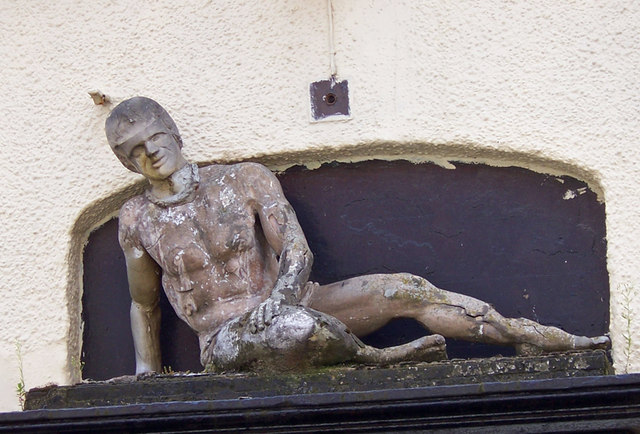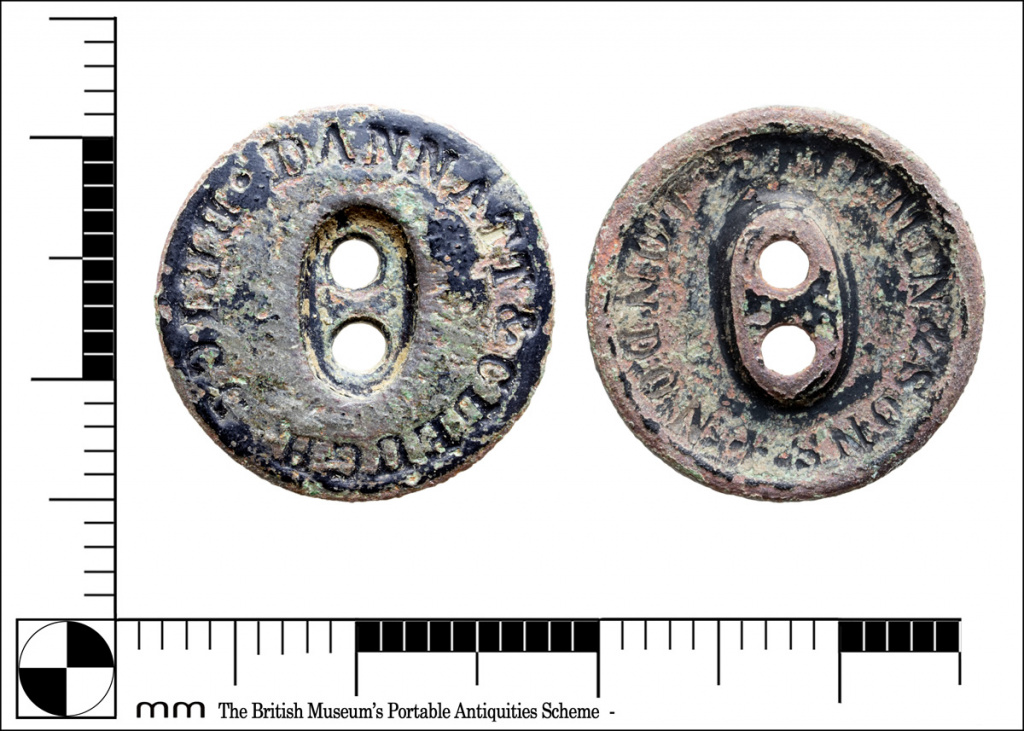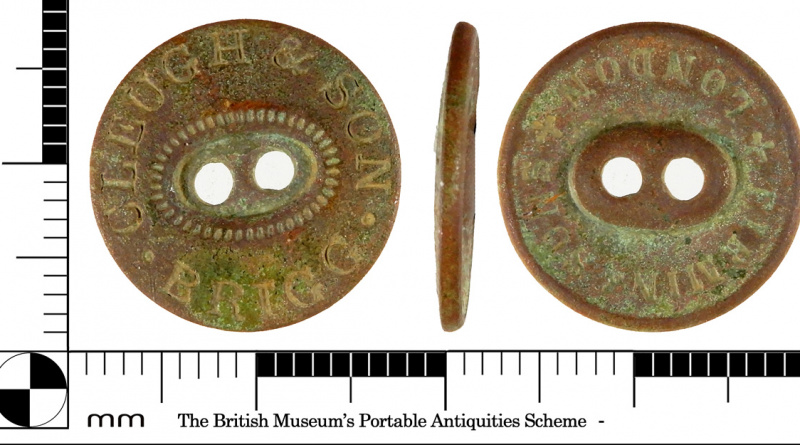Cleugh & Son button
A copper alloy button which reads CLEUGH & SON BRIGG and FIRMIN & SONS +LONDON+ on the back. The PAS record indicates that this button was from a family tailoring business.
Thomas Cleugh
Thomas Cleugh was born in South Shields in 18201 where he served as an apprenticeship as a tailor. In 1841 he married Alice Harper, also of South Shields. They moved to Brigg in North Lincolnshire and set up a tailoring business in Bigby Street, close to the “Dying Gladiator” pub.2

Photo: David Wright CC Bty SA2.0
It is said to be the only pub with this name in the UK and is referred to by locals as “The Glad”. The statue above the door is inspired by a statue in Rome called The Dying Gaul . The statue was known as the The Dying Gladiator until the the mid 19th Century on the assumption that it depicted a wounded gladiator in a Roman amphitheatre.
However, the original Dying Gaul statue is now thought to have been made between 230 BC – 220 BC to celebrate the victory of Attalus I of Pergamon over the Galatians.
Thomas and Alice had 5 children, John, Elizabeth, Ellen, Thomas and Alice.
Dannatt and Cleugh
Edward Dannatt was also trading in Brigg as a tailor, woollen draper and hatter at the same time. When his partner, Walter Symington, died in 1869, he set up in partnership with Thomas.

Photo: Richard Croft CC By SA2.0
The Cleugh family moved to live above Edwards’ business premises at 10 Market Street. It was only just around the corner but would have been a step up to a more prestigious trading area.
PAS record of a Dannat & Cleugh button

Photo: PAS CC By SA2.0
The PAS have a button from this partnership with DANNATT & CLEUGH on the front and FIRMIN & SONS +LONDON+ again on the back.
Edward Dannatt died in 1890 and by 1894 the business had closed.
Cleugh & Son
This leads to the question; when was the business known as “Cleugh & Son”? Thomas Cleugh junior was born in 1850 meaning he would have been 19 when his father set up in partnership with Edward Dannatt. If they were trading as Cleugh & Son before the new partnership that would have stopped when they were moved to Dannatt’s premises.
At the other end of the partnership, Edward Dannatt dies in 1890 by which time Thomas senior is 70. In 1894, he also dies and Thomas junior moves to work for a tailor in Bradford.2
An insight is provided from a diary of a the headmaster of Pocklington Church of England School from 1882-1888, Atkinson Skinner. He records that on 2 July 1884 “I was measured for a ‘special suit’ at Cleugh’s” and later than month ” Went to Cleughs. Tried on my ‘best’ . Bought my Topper 12/6d“. The following year, on 21 January he writes: “Paid Cleugh £3 for overcoat“3. This suggests that by 1884 the business was no longer Dannatt & Cleugh and so had mostly likely changed to Cleugh & Son.
Firmin & Sons
The back of the button reads FIRMIN & SONS +LONDON+. The website of this company says “Firmin & Sons has been proudly manufacturing in the UK since 1655, making it the oldest manufacturing company in the UK, and one of the oldest still extant in the world. From modest beginnings as button makers, we are now a designer and supplier of every form of uniform, livery or badge, and the accessories and accoutrements to go with them.”4

